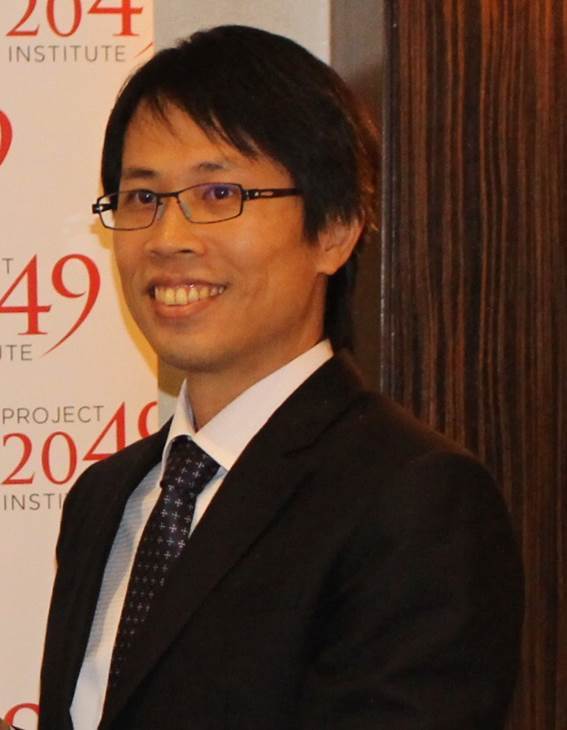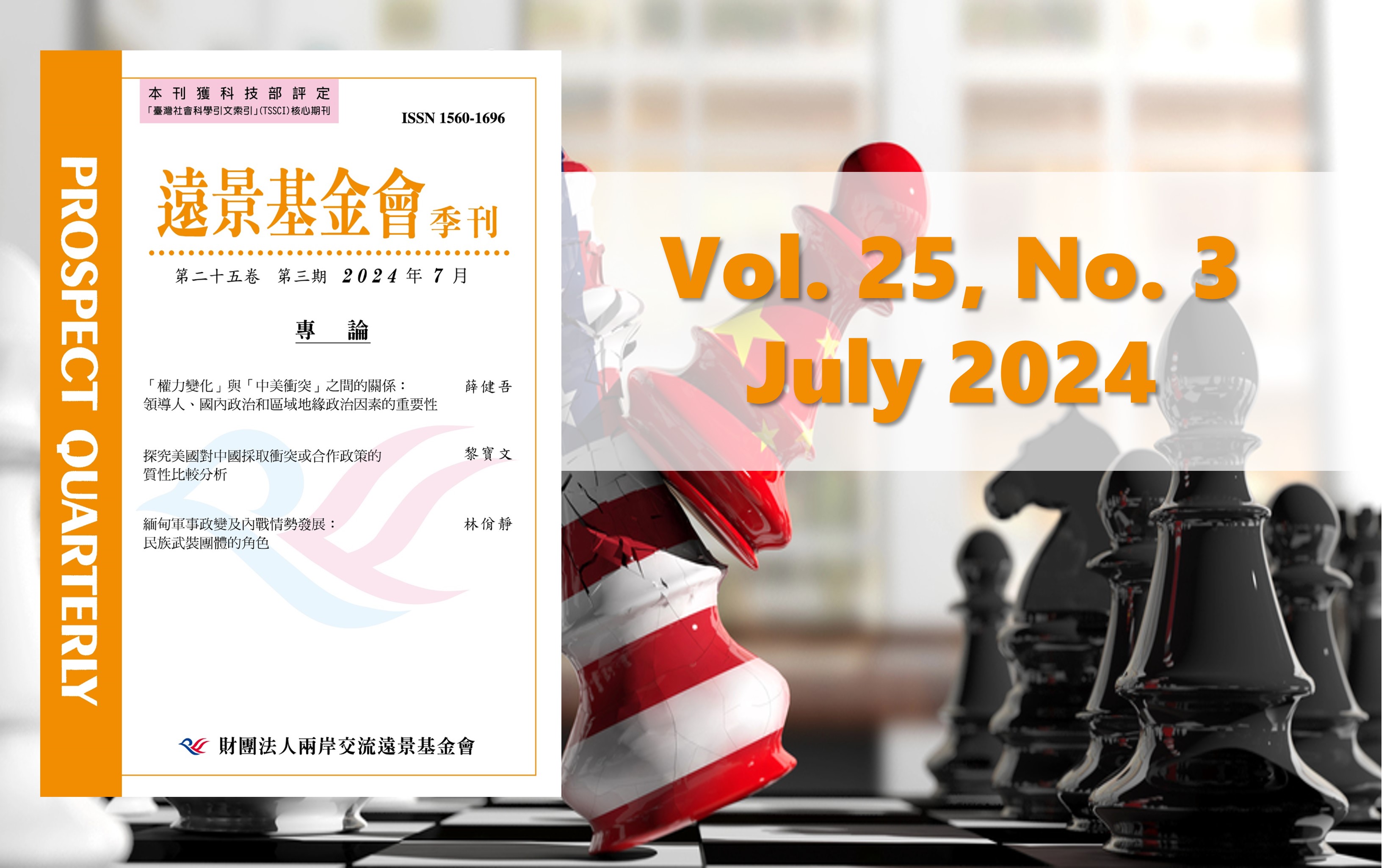Prospect Quarterly 25-3
The Relationship between Changes in Relative Power and the Sino-U.S. Conflict:
The Importance of Individual, State-Level, and Regional-Geopolitical Factors
Chien-wu Alex Hsueh
(Professor, the Graduate Institute of East Asian Studies,
National Chengchi University)
Abstract
This study compares the hypotheses of four mainstream international relations theories that predict major power conflicts based on “structural factors" (relative power shifts) – structural realism, power transition theory, dynamic differentials theory, and offensive realism. It then examines the correlation between Sino-U.S. relative power changes across various objective power indicators and their bilateral conflict. The findings are as follows: First, when measuring their relative power changes using "purchasing power parity-adjusted GDP," the predictions of offensive realism most closely match the current conflict pattern between China and the United States. Second, aside from this indicator, the changes in all other objective power indicators do not align with the predictions of any of these four mainstream theories regarding conflict patterns. These findings indicate that while “structural factors” undoubtedly form the backdrop for conflicts between China and the United States, the rapidly increasing conflict in recent years are more likely driven by changes in individual, state-level, and regional-geopolitical factors.
Keywords: Sino-U.S. Competition, Structure Realism, Power Transition Theory, Dynamic Differentials Theory, Offensive Realism
Qualitative Comparative Analysis of U.S. Policies toward China:
Exploring Conflict or Cooperation
Pao-wen Li
(Associate Professor, Institute of China and Asia-Pacific Studies,
National Sun Yat-sen University)
Abstract
Since the Cold War, the United States’ policy toward China has evolved from confrontation to engagement, and now toward strategic competition. What are the causes of conflict and cooperation in U.S. policy toward China? This article establishes an analytical framework based on power transition and enduring rivalry theories. It employs a fuzzy-set qualitative comparative analysis method using set theory and Boolean logic to compare various combinations of factors that have influenced U.S. presidents’ policies toward China over the years. The analysis aims to identify the necessary or sufficient conditions for U.S. conflict or cooperation with China. The results of this analysis indicate that Chinese dissatisfaction with U.S.-China relations and lack of a common enemy together constitute sufficient conditions for U.S. conflict with China. Furthermore, Chinese satisfaction with U.S.-China relations and the presence of a common enemy are each sufficient conditions for U.S. cooperation with China.
Keywords: U.S.-China Relations, U.S. Foreign Policy, Power Transition, Enduring Rivalry, Qualitative Comparative Analysis
The Myanmar Military Coup and the Evolution of Civil War: The Role of Ethnic Armed
Organizations
Yi-ching Lin
(Ph. D., Department of Diplomacy,
National Chengchi University)
Abstract
Myanmar’s February 1, 2021, coup d’état staged by Tatmadaw ended Myanmar’s decade-old process of democratization and intensified armed conflict across the country. The junta’s suppression and undiscriminated assault on its opponents has fueled resistance movements and spiraled into civil war nationwide, involving civilians and ethnic armed groups from across the country. While the shadow government, the National Unity Government (NUG), called for armed struggle against the junta’s coup, the military mobilization has been energized by the NUG’s move to organize an army and military cooperation with other pro-democracy efforts. However, due to a lack of sophisticated arms and military expertise, the NUG has an urgent need to win over the support of Ethnic Armed Organizations (EAO) and assistance in military and political aspects. EAOs are regarded as influential and significant partners with their leverage and dominance, as the NUG and junta both are struggling to establish a legitimate government in the post-coup era. EAOs have had a wide range of responses — and resistance to — the coup, based on their history, geographic location and strategic objectives, with appeals for territorial, governance and nation-building proposals in the form of independence, autonomy or a federal union. Amid the dynamics of escalating conflict crisis, perceptions of the role of EAOs have shifted from that of rebel actor to savior, from peace spoiler to peace maker. This paper explores the dynamics of Myanmar’s civil war since the 2021 coup d’état and the role of EAOs amid the struggle between resistance movements and military-regime consolidation.
Keywords: Coup d’État, Junta, National Unity Government, Ethnical Armed Organizations, Post-coup Era




